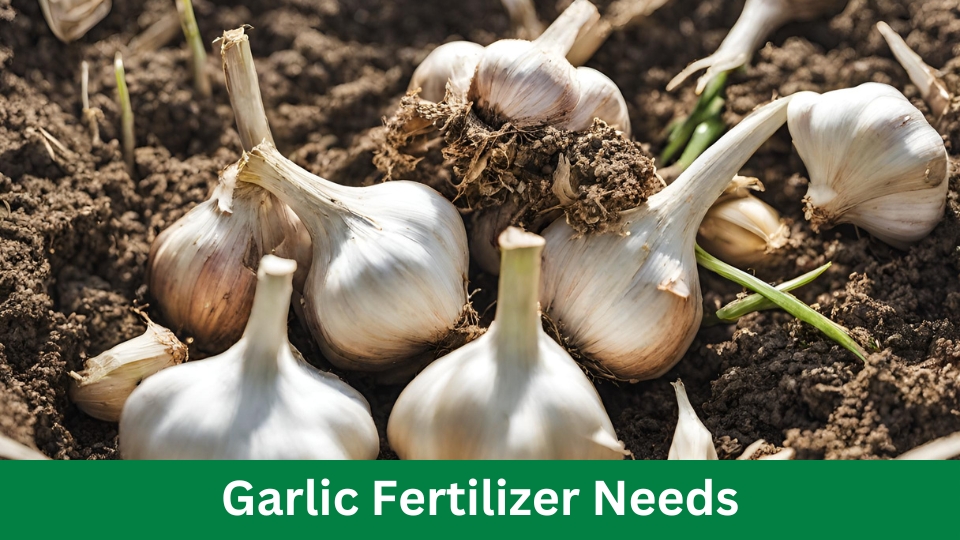Garlic requires a balanced fertilizer with a higher nitrogen content during its early growth stage. Proper fertilization will contribute to larger and healthier garlic bulbs.
To achieve optimum growth, it’s essential to provide the right nutrients throughout the plant’s lifecycle. The fertilizer needs of garlic plants change as they progress from planting to harvest, requiring different formulations at each stage. Understanding these needs and applying appropriate fertilizers can significantly impact the yield and quality of the garlic crop.
So, Garlic fertilizer needs, including the nutrients essential for promoting robust growth and maximizing harvest, are discussed in this article.
Understanding Garlic Nutrient Requirements
Garlic’s Nutrient Needs
Garlic, a staple in many culinary dishes, requires specific nutrients for optimal growth and development. Understanding garlic’s nutrient needs is crucial for cultivators to ensure a bountiful harvest. Macronutrients and micronutrients are vital for garlic plant growth and health.
Macronutrients For Garlic Growth
Garlic plants have specific macronutrient requirements to support their growth and development. These macronutrients include nitrogen, phosphorus, and potassium. Nitrogen is vital for promoting leafy growth and plant vigor. Phosphorus supports strong root development and enhances flowering and fruiting. Potassium enhances garlic’s disease resistance and improves overall plant strength.
Micronutrients For Garlic Thriving
While macronutrients are essential, garlic also requires various micronutrients to thrive. Garlic micronutrients include iron, manganese, zinc, and copper.
These micronutrients are vital in garlic plant enzyme activation, chlorophyll production, and overall metabolic function. While these micronutrients are required in smaller quantities, they are crucial for garlic plants’ health and vitality.
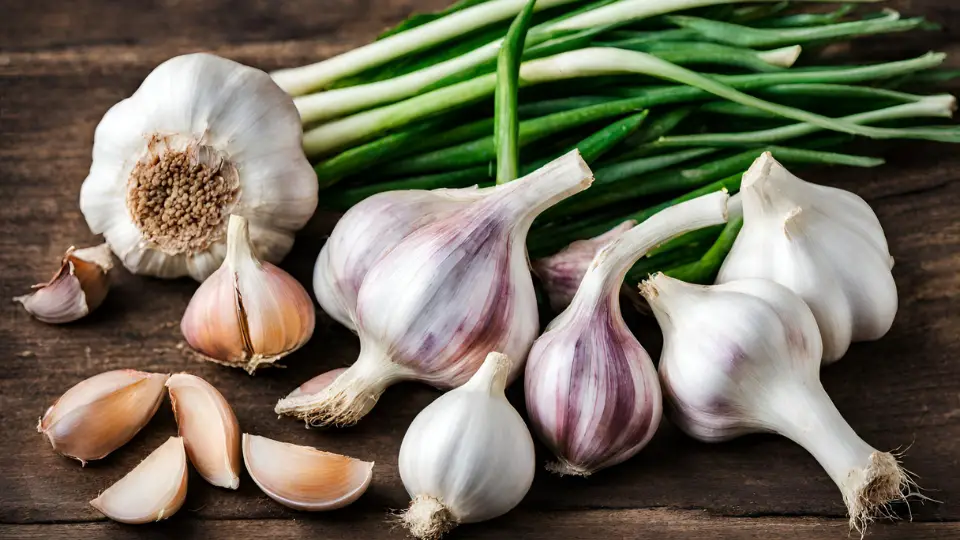
Choosing The Right Fertilizers For Garlic
Growing garlic can be a rewarding experience, and providing the right fertilizers is essential for a successful harvest. Various options exist when choosing the right fertilizers for garlic. From organic to synthetic, it’s essential to understand the best fertilizer needs for garlic to ensure optimal growth and flavor.
Let’s explore the different options for fertilizing garlic to help you make an informed decision and achieve a bountiful garlic crop.
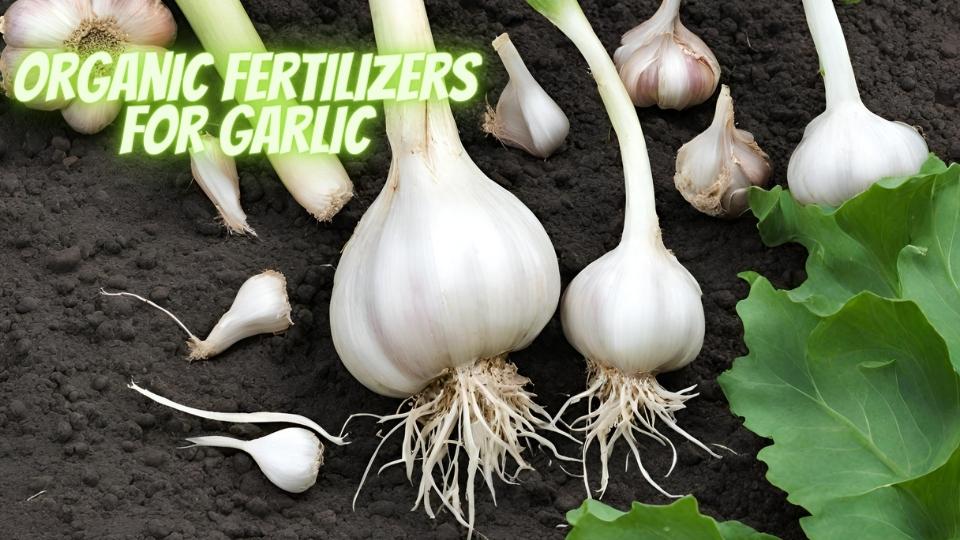
Organic Fertilizers For Garlic
Organic fertilizers are derived from natural sources and contain essential nutrients beneficial for garlic growth. These fertilizers are typically slow-release, providing a steady supply of nutrients to the garlic plants.
Well-rotted compost is an excellent organic fertilizer for garlic, as it enriches the soil and improves its structure. Other organic options, such as fish emulsion and seaweed-based fertilizers, are nutrient-rich and can enhance garlic growth and flavor.
Synthetic Fertilizers For Garlic
Synthetic fertilizers, or chemical fertilizers, are manufactured to provide specific nutrients to the garlic plants. They are often fast-acting and can quickly deliver essential nutrients to the soil.
- Granular 10-10-10 fertilizer is a standard synthetic option, containing a balanced nitrogen, phosphorus, and potassium ratio.
- Ammonium nitrate and ammonium phosphate are other synthetic fertilizers that can effectively support garlic growth when used according to recommended guidelines.
Best Fertilizer Ratios For Garlic
When it comes to the best fertilizer ratios for garlic, it’s crucial to consider the specific nutritional needs of the garlic plants at different growth stages.
- For planting, fertilizer with a higher phosphorus content, such as 5-10-5, can promote strong root development.
- A low-nitrogen, high-potassium fertilizer, like 0-10-10, can encourage robust bulb growth during bulb formation.
- A balanced fertilizer, such as 10-10-10, can provide nutrients for healthy foliage and bulb development during active growth.
Application Methods For Garlic Fertilization
Garlic, a widely used culinary herb, requires proper fertilization to grow healthy and produce a bountiful harvest. Applying the proper fertilizer using suitable methods is crucial for promoting strong growth and flavor development in garlic plants. Let’s explore the various application methods for garlic fertilization to ensure optimal results.
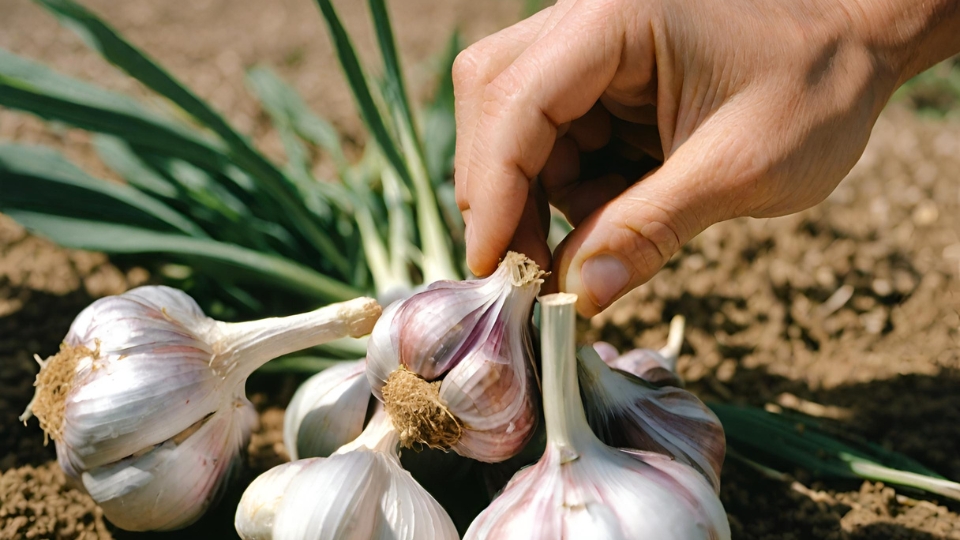
Top Dressing Garlic With Fertilizer
Top dressing is an effective method for providing garlic with the essential nutrients it needs to thrive. This involves applying fertilizer directly on the soil surface around the base of the garlic plants. To top dress garlic with fertilizer:
- Ensure the soil is moist but not waterlogged.
- Sprinkle the appropriate granular fertilizer around the plants, avoiding direct contact with the foliage.
- Gently work the fertilizer into the top layer of the soil using a hand tool, taking care not to damage the garlic bulbs or roots.
- Water the area lightly to help the fertilizer’s nutrients reach the plant roots.
Liquid Fertilization For Garlic
Liquid fertilization provides a quick and efficient way to deliver essential nutrients to garlic plants through their root systems. This method involves applying a water-soluble fertilizer solution directly to the soil around the base of the plants. Follow these steps for adequate liquid fertilization:
- Dilute the liquid fertilizer according to the manufacturer’s instructions.
- Pour the solution onto the soil, ensuring even coverage around the garlic plants.
- Water the area lightly to help the fertilizer percolate into the soil.
- Repeat liquid fertilization regularly throughout the growing season to support the garlic’s development.
Foliar Feeding For Garlic
Foliar feeding involves applying a liquid fertilizer directly to the leaves of garlic plants, allowing for rapid nutrient absorption.
When using this method, it is essential to apply the fertilizer during the plant’s active growth periods and avoid spraying during hot, sunny conditions to prevent leaf burn. Follow these guidelines for foliar feeding:
- Prepare a diluted liquid fertilizer solution suitable for foliar application.
- Spray the solution evenly onto the garlic foliage, ensuring thorough coverage on both sides of the leaves.
- Repeat foliar feeding every 2-3 weeks during the growing season, avoiding application during high temperatures or late in the day to minimize the risk of leaf injury.
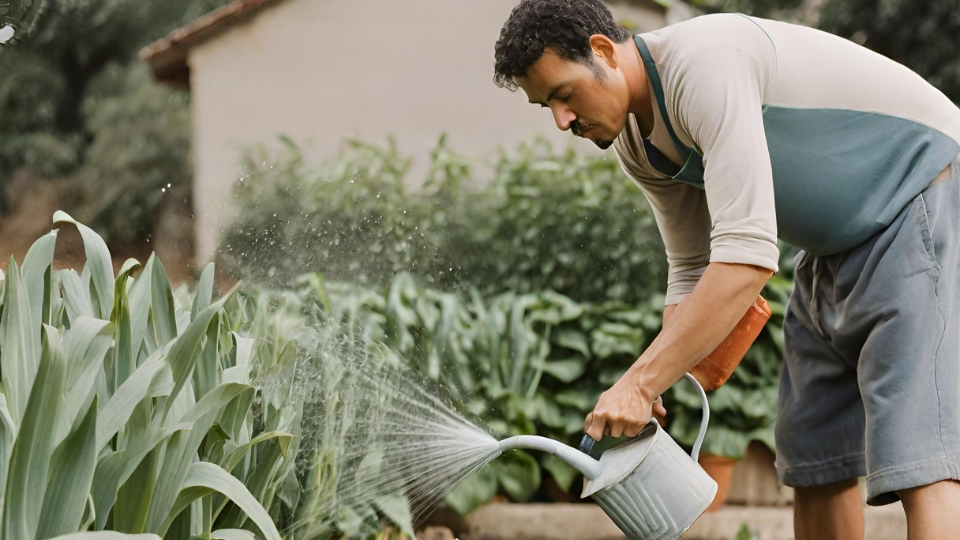
Timing And Frequency Of Garlic Fertilization
When it comes to ensuring the optimal growth and development of garlic, understanding the timing and frequency of fertilizer application is crucial. Properly timed and frequent fertilization can contribute significantly to the health and yield of garlic plants.
We will discuss the optimal timing for fertilizing garlic in this section. We will also explore the frequency of fertilizer application and how to adjust fertilization based on growth stages.
Optimal Timing For Fertilizing Garlic
Fertilizing garlic at the right time promotes healthy growth and maximizes bulb development. The ideal timing for garlic fertilizer application is during planting or shortly after emergence. This ensures that nutrients are readily available to support early growth.
However, avoiding over-fertilization during late fall or winter is important, as this can lead to excessive foliage growth at the expense of bulb formation.
Frequency Of Fertilizer Application For Garlic
Fertilizer application frequency for garlic can vary depending on soil conditions and the plant’s needs. Generally, a single application of balanced fertilizer during planting or emergence may be sufficient for some soil types.
However, in nutrient-deficient soils or using organic fertilizers with lower nutrient concentrations, a second application may be beneficial during the growing season to provide a consistent supply of nutrients to the plants.
Adjusting Fertilization Based On Growth Stages
As garlic progresses through its growth stages, it’s essential to adjust fertilization to meet changing nutrient requirements. During the initial growth stages, nitrogen should be provided for foliage development.
As the plants transition to bulb formation, reducing nitrogen levels and increasing potassium and phosphorus can promote bulb enlargement and overall bulb quality. Attention to these growth stages allows targeted fertilization, optimizing garlic plant development.
Monitoring And Troubleshooting Garlic Fertilization
Monitoring and troubleshooting garlic fertilization is crucial to ensuring garlic crop health and vigor. By understanding the signs of nutrient deficiency, addressing fertilizer burn, and monitoring the success of your fertilization efforts, you can optimize garlic plant growth and yield.
Signs Of Nutrient Deficiency In Garlic
Garlic plants can exhibit various signs of nutrient deficiency, indicating the need for specific fertilizers. Common signs include yellowing leaves, stunted growth, and decreased bulb formation. By closely observing your garlic plants’ foliage and overall development, you can identify specific nutrient deficiencies and take appropriate actions to rectify them.
Addressing Fertilizer Burn In Garlic
Fertilizer burn can occur if garlic plants are exposed to excessive fertilizers, leading to scorched or damaged foliage. Careful application and distribution of fertilizers and watering plants thoroughly can prevent fertilizer burn. If signs of fertilizer burn are observed, it’s crucial to adjust the fertilization regimen to avoid further damage and promote healthy growth.
Monitoring Garlic Fertilization Success
Regularly monitoring garlic fertilization success involves assessing the overall health and development of the plants, as well as the size and quality of the bulbs. Keeping track of the fertilization schedule, plant response, and soil nutrient levels can help gauge the effectiveness of the fertilization program.
Based on the observed outcomes, adjustments can be made to ensure that garlic plants receive the necessary nutrients for optimal growth and productivity.
FAQs On Garlic Fertilizer Needs
What Is The Best Fertilizer For Garlic Plants?
Garlic plants thrive with a balanced fertilizer high in nitrogen for leafy growth and potassium for bulb development. Look for a 10-10-10 or 8-8-8 fertilizer blend to support healthy garlic growth.
When Should Garlic Plants Be Fertilized?
Fertilize garlic plants once when shoots emerge in early spring and then again when bulbs start to swell. Avoid over-fertilizing, as this can lead to excessive leafy growth at the expense of bulb development.
How Can I Make Organic Garlic Fertilizer?
Mix compost, aged manure, and bone meal for organic garlic fertilizer. Apply this mixture to the soil around the garlic plants, providing essential nutrients for healthy growth without synthetic chemicals.
Can I Use Epsom Salt As A Garlic Fertilizer?
Yes, Epsom salt can be used to fertilize garlic plants. Dissolve one tablespoon of Epsom salt in a gallon of water and apply the solution to the soil around the garlic plants to provide a magnesium boost for improved growth.
Conclusion
Understanding the specific needs of garlic fertilizer is essential for successful cultivation. Whether it’s choosing the right type of fertilizer, timing application, or understanding the nutrient requirements of garlic, these insights can significantly impact the health and productivity of your garlic crops.
You can ensure a bountiful harvest and healthy plants by following best practices for garlic fertilizer needs.
Video Source: https://www.youtube.com/watch?v=KpMAHx1Ag-4

